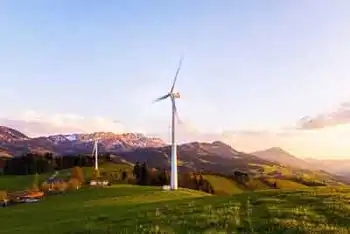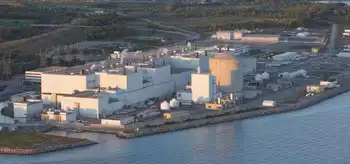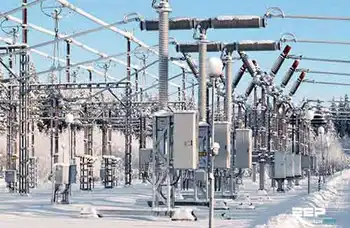U.S. utility future unclear with CO2 rules
WASHINGTON DC - The absence of mandatory U.S. limits on carbon dioxide emissions from power plants has left a regulatory vacuum for a utility sector struggling to plan much-needed future generation investment.
A Republican take-over of the House of Representatives spurred a virtual deadlock in Congressional negotiations on first-ever U.S. greenhouse gas limits, leaving power companies facing an uncertain future.
Nationwide carbon dioxide limits may be inevitable, but the timing and scope of regulation is a giant question mark for power companies trying to stay ahead of U.S. power demand, forecast to grow 30 percent by 2035.
"We all know it's coming," said Lewis Hay, chief executive officer of NextEra Energy Inc, the largest U.S. owner of wind farms, speaking at the IHS CERA conference.
"But it's very hard for us... to make some of the decisions you have to make with no price on carbon, but fully expecting there will be one in the future," Hay said.
As the nation's largest operator of nuclear plants, Exelon Corp. was one of the first U.S. utilities to launch a program to reduce its carbon footprint back in 2008.
Carbon legislation is "dead for now," but a potential glut of clean-burning natural gas supply from shale formations has lessened the need for regulatory action on climate change, Exelon's chief executive John Rowe told the conference.
Utilities like Exelon that could boast low-carbon generation used to command a premium, but that equation has become hazy due to federal inaction, said Jamie Welch, head of global energy investment banking at Credit Suisse.
"We all recognize that it's sort of the elephant in the room," Welch said, referring to the difficult task of handicapping companies by their potential carbon emissions. "Everyone is walking around it and nobody really wants to tackle it."
In valuing utilities, "you want to be cognizant of the risks but its almost impossible to quantify them," echoed Joseph Sauvage, co-head of global power at CitiGroup.
What kind of power plants — gas-fired, nuclear, advanced coal, wind or solar — will be most economical to build and operate as well as satisfy as-yet undefined mandates to emit fewer pollutants.
Lack of a road map "has make if very difficult for all of us to make our capital allocation decisions," said Dominion Resources Chief Executive Tom Farrell. "Most, if not all, utilities have aging fossil-fuel fleets."
Looming EPA regulations already have many utilities making decisions about whether to shut older coal plants or to invest in additional pollution controls.
Even without carbon legislation, the Energy Information Administration projects that the U.S. electricity mix will shift to lower-carbon resources by 2035 with gas-fired generation rising 37 percent and renewables by 73 percent.
Increased reliance on gas generation will be an attractive and affordable path for a few years, but won't meet the need to reduce carbon emissions over the long haul.
"If you shut every coal plant and replace with natural gas, you'll produce just a much carbon in 2050 as you do today because of growth," said Farrell. "So why are we doing all this if you are not going to solve the problem?"
"There's a lot of money sitting on the sidelines in our industry," NextEra's Hay said. "People are prepared to invest, but we need clarity as to what the rules of the road are going to be."
Related News

US Automakers Will Build 30,000 Electric Vehicle Chargers
WASHINGTON - Seven major automakers announced a plan on Wednesday to nearly double the number of fast chargers in the United States in an effort to address one of the main reasons that people hesitate to buy electric cars.
The carmakers — BMW Group, General Motors, Honda, Hyundai, Kia, Mercedes-Benz Group and Stellantis — will initially invest at least $1 billion in a joint venture that will build 30,000 charging ports on major highways and other locations in the United States and Canada.
The United States and Canada have about 36,000 fast chargers — those that can replenish a drained battery in…




